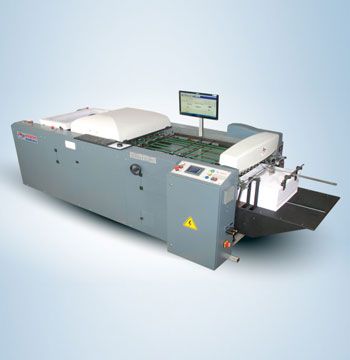Keeping the Press Rolling: Key Maintenance Requirements for Printing Machines
2023-12-28
Introduction
Printing machines, whether offset, digital, or flexographic, are intricate pieces of equipment that demand regular care to maintain optimal performance. To ensure longevity, minimize downtime, and produce high-quality prints, it's essential to adhere to a comprehensive maintenance routine. In this blog, we'll explore the key maintenance requirements for printing machines, providing insights into best practices for keeping the press rolling smoothly.
1. Scheduled Cleaning Procedures:
Regular cleaning is the cornerstone of effective maintenance for printing machines. Dust, ink residue, and paper debris can accumulate on various components, affecting print quality and causing mechanical issues. Scheduled cleaning procedures should encompass the entire machine, from the ink rollers and blankets to the paper feed and delivery systems.
2. Lubrication of Moving Parts:
Proper lubrication is crucial for the smooth operation of printing machines. Regularly lubricating moving parts, such as bearings, chains, and gears, helps prevent friction-related wear and tear. It's essential to use the recommended lubricants and follow the manufacturer's guidelines for frequency and quantity.
3. Inspecting and Replacing Consumables:
Printing machines rely on consumables such as ink, rollers, blankets, and plates. Regularly inspect these components for signs of wear and tear. Replace consumables that show deterioration to maintain print quality and prevent damage to other parts of the machine. Adhering to a proactive replacement schedule can prevent unexpected breakdowns.
4. Checking and Adjusting Tension Settings:
Paper tension is a critical factor in the printing process. Excessive or insufficient tension can lead to registration issues, wrinkles, or other problems. Regularly check and adjust the tension settings for paper feed, rewind, and unwind systems to ensure precise control over the paper web.
5. Calibrating Color Management Systems:
For color accuracy and consistency, printing machines often use color management systems. Calibrating these systems at regular intervals ensures that colors remain accurate and consistent across different print runs. This is particularly important for maintaining brand consistency and meeting client expectations.
6. Inspecting and Cleaning Sensors:
Modern printing machines incorporate various sensors for detecting paper position, color registration, and other critical parameters. Regularly inspect and clean these sensors to ensure accurate data input. Malfunctioning sensors can lead to misregistration, poor print quality, or even damage to the machine.
7. Maintaining Electrical Components:
Printing machines are equipped with various electrical components, including motors, switches, and control panels. Regularly inspecting these components for signs of wear, loose connections, or electrical issues is crucial. Ensure that electrical panels are kept clean and free from dust, as the accumulation of debris can pose a fire hazard.
8. Checking and Aligning Print Heads:
For digital printing machines, maintaining the alignment of print heads is essential for optimal print quality. Check and align print heads regularly to prevent issues such as banding, streaking, or color variations. Follow manufacturer guidelines for specific procedures related to print head maintenance.
9. Implementing Preventive Maintenance Schedules:
To stay ahead of potential issues, establish a preventive maintenance schedule based on the manufacturer's recommendations. This schedule should include routine checks, lubrication tasks, and component replacements. Adhering to a proactive maintenance plan can significantly extend the lifespan of the printing machine and minimize unexpected downtime.
10. Training and Empowering Operators:
Empowering operators with proper training is a key element of effective maintenance. Operators should be familiar with the equipment, know how to perform routine checks, and understand the importance of preventive maintenance. Encourage a culture of responsibility and accountability for the well-being of the printing machinery.
Conclusion
The efficient and reliable operation of printing machines hinges on meticulous maintenance practices. By incorporating these key requirements into a comprehensive maintenance plan, printing facilities can maximize the lifespan of their equipment, minimize unplanned downtime, and consistently produce high-quality prints. Regular checks, cleaning procedures, and proactive component replacements are investments that pay off in terms of increased productivity, reduced repair costs, and satisfied clients.



